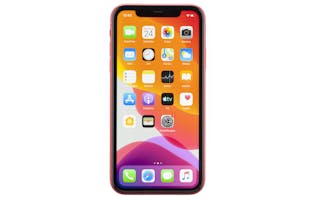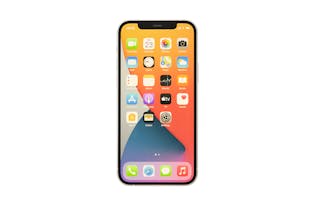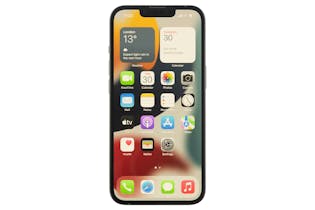How to choose the best case to protect your mobile phone
Learn what you need from a phone case, why you don’t need to spend a lot, and what “military grade” really means.

Visit any mall and you’ll see at least one shop selling phone cases and not much else. For me, that raises a few questions. How is that a viable business model? Who’s buying all those cases? Are the shops secretly money laundering fronts?
Well, maybe, but that doesn’t change that phone cases are big business. There are hundreds to choose from, especially for prominent iPhone and Galaxy S models. Cases range from $10 moulded-gel sleeves to $140 polycarbonate monsters that “can outlast 5x as many drops as the military standard”.
So, which one do you need?
Here are some tips to help you sort through the chaff and pick the right case.

Do you need a case at all?
Phones are very tough. Reinforced glass products, such as Ceramic Shield and Gorilla Glass, are stunningly resistant to scratching or smashing, and many phones today have reinforced glass on both the front and back. Cheaper phones are backed with plastic, which is even more durable because it’s slightly flexible.
The brave among us venture through life with a naked phone, freely exposing it to the elements and any hard surfaces it may encounter. Phones are beautiful pieces of modern design, we may argue. They’re sleek, light and thin – why hide all that behind a bulky case?
Well, put simply, the care-free case-free lifestyle is only one piece of bad luck away from disaster. Phones are tough, yes, but they’re not indestructible. All it takes is one impact on the wrong surface at the wrong angle. You need to really trust your grip to be willing to take that risk.
What you need from a case
Most cases nail the basics.
With that in mind, our advice is to use the least obtrusive case you can find that ticks the following simple boxes. That way you get the lightest, thinnest device possible, while still keeping it safe.
A raised lip around the screen
A case with a lip that sticks out past the screen will hit the ground first if you drop your phone face-down, protecting the glass by absorbing some of the energy from the impact. The case will also reduce wear-and-tear scratching caused by placing your phone screen-side down.
Raised edges around the camera
The camera enclosure on the back of your phone is also made of glass and needs to be protected. If that isn’t an insight to you, congratulations! You’re smarter than I am.
To avoid a smashed or scratched lens, your case needs a lip around the camera housing, similar to the one around the display.
A tight fit
Like a cosy set of thermals, the best phone cases fit well. The closer the case hugs the body of the phone, the more effective it’ll be at absorbing energy from a fall.
That makes it important to buy a case designed for the exact dimensions of your model of phone. If your phone isn’t a major brand (Samsung, Apple, Oppo) this is a bit harder, but you can always find suitable cases online.
When you buy a new case, keep the receipt and packaging until you can try it on the phone. If it’s a bit loose, return it.
Something to hold on to
A case doesn’t need to protect against drops if you don’t drop your phone in the first place. Before buying a case, consider whether the material it’s made from has enough texture and grip to stick in your hand.
What you don’t need from a case
Military grade
As a marketing term, “military grade” is fairly meaningless.
Usually, it means the manufacturer has tested the product against the US military’s MIL-STD-810G standard in some way. The standard measures the durability of military equipment against common environmental factors, such as heat, cold, water and gunshots.
That doesn’t mean you should keep a military-grade phone case in your breast pocket to block speeding bullets.
In fact, only one section of the lengthy standard is usually used for consumer goods: Procedure IV of the “shock” test, where equipment must remain functional after being dropped 26 times from four feet high.
That still sounds pretty relevant, right? Only, there’s no organisation that certifies or validates the test, so companies are free to interpret it however they like. They could drop a case from four feet onto a plush carpet for all you know, or a trampoline. Worse, they could do no testing at all, and wouldn’t be breaking any regulations.
That’s not to say you should avoid any case with a military-grade claim, especially if you’re someone like a builder or mechanic who needs heavy-duty protection for their phone during the day. Just don’t let those words influence your decision-making.
The premium option
Phone cases are one of the few product categories where price seems to have little impact on quality, at least in a practical sense.
More expensive cases might look nicer or be made from premium materials, which are legitimate reasons to spend a bit more – just don’t expect better protection.

No case is perfect
While using a case might increase your phone’s survival odds in an uncontrolled plunge, a phone is never truly safe from damage, so don’t get negligent.
Case manufacturers don’t stand behind their products enough to reimburse you for a broken phone. At best, you might get a replacement warranty for the case itself.
Check your phone’s durability rating
Our test method for phones includes a section on durability. As part of this testing, we drop a phone onto stone from 80cm high. The idea is to simulate a phone slipping out of a hand from waist height onto a surface like concrete.
We repeat the drop up to 100 times to see whether the phone gets damaged or stops working, and if so, after how long. For obvious reasons, it’s the last test we conduct.
Unlike manufacturers’ military-grade claims, our test is consistent and comparable across all phone models.
You can find your phone’s durability score under More test results on its product page on our website. If your phone scores poorly, you might want to err towards a heavy-duty case. But for a phone with a durability score of 80 or higher, something basic should be enough to cover freak accidents – or you could risk leaving your phone au naturel.
We've tested 137 mobile phones.
Find the right one for you.



Member comments
Get access to comment